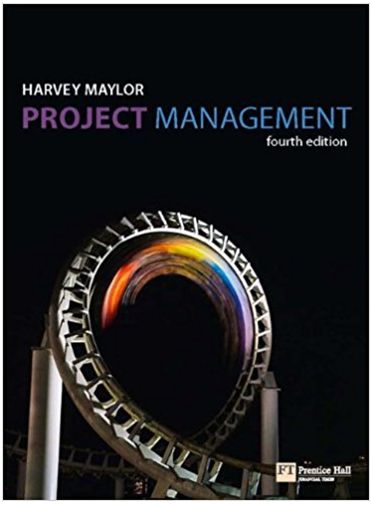Answered step by step
Verified Expert Solution
Question
1 Approved Answer
The Eye in the Sky Case Study: To Fire or Not? Our story opens in Nairobi, Kenya, where Alia Mo'Allim, a young girl, twirls a
The Eye in the Sky Case Study: To Fire or Not?
Our story opens in Nairobi, Kenya, where Alia Mo'Allim, a young girl, twirls a hula hoop made by her father in their backyard.
British Army Colonel Katherine Powell wakes up early in the morning and hears that an undercover BritishKenyan agent has been murdered by the AlShabaab group. From Northwood Headquarters she takes command of a mission to capture three of the ten highestlevel AlShabaab leaders, who are meeting in a safehouse in Nairobi. These include a British couple, Susan Helen Danford based on Samantha Lewthwaite and her husband.
A multinational team works on the capture mission, linked together by video and voice systems. Aerial surveillance is provided by a USAF MQ Reaper drone controlled from Creech Air Force Base in Nevada by USAF pilot, d Lt Steve Watts. Undercover Kenyan field agents, including Jama Farah, use shortrange ornithopter and insectothopter cameras to link in ground intelligence. Kenyan special forces are positioned nearby to make the arrest. Facial recognition to identify human targets is done at Joint Intelligence Center Pacific at Pearl Harbor in Hawaii. The mission is supervised in the United Kingdom by a COBRA meeting that includes British Lieutenant General Frank Benson, two full government ministers and a ministerial undersecretary
Farah discovers that inside the house, the three highlevel targets are now arming two suicide bombers one is American for what is presumed to be an attack on a civilian target. Powell decides that the imminent bombing changes the mission objective from capture to kill. She informs drone pilot Watts to prepare a precision Hellfire missile attack on the building, and solicits the opinion of her British Army legal counsel. To her frustration, her counsel advises her to seek approval from superiors. Benson asks permission from the COBRA members. Citing conflicting legal and political views and contrasting the tactical value of the assassination with the negative publicity of killing civilians and the status of some of the targets as American or British nationals, they fail to reach a decision and refer the question up to the UK Foreign Secretary, presently on a trade mission to Singapore. He does not offer a definite answer and defers to the US Secretary of State, presently on a cultural exchange in Beijing, who immediately declares the American suicide bomber an enemy of the state. The Foreign Secretary then insists that COBRA take due diligence to minimize collateral damage.
Alia, who lives next door, is now near the target building selling her mother's bread. The senior military personnel argue the risk of letting three highlevel terrorist leaders, and two realtime suicide bombers, leave the house. The lawyers and politicians involved in the chain of command argue the personal, political, and legal merits of and justification for launching a Hellfire missile attack in a friendly country not at war with the US or UK with the significant risk of collateral damage. Watts and his enlisted sensor operator, AC Carrie Gershon, can see the more direct risk of little Alia selling bread outside the targeted building, and they seek to delay firing the missile until she moves.
Farah is directed to try and buy all of Alia's bread so she will leave, but after paying her his cover is blown and he is forced to flee. Alia retrieves the bread he dropped and sits down to sell it a second time.
Seeking authorization to execute the strike, Powell orders her riskassessment officer to find parameters that will let him quote a lower risk of civilian deaths. He reevaluates the strike point and assesses the probability of Alia's death at She makes him confirm only the lower figure, and then reports this up the chain of command. The strike is authorized, and Watts fires a missile. The building is destroyed, with Alia injured but unconscious. However, Danford also survived. Watts is ordered to fire a second missile, which strikes the site just as Alia's parents reach her. Her parents suffer some injuries and rush Alia to a hospital, where she dies.
After reading the case study, answer the following questions:
What is your judgment about the decision to authorize the strike? Was it legal? Was it moral? State why you think so
The immediate results of the decision to authorize the strike is that the building is destroyed, the terrorists are killed, but the young girl in the danger zone is also killed. Do you think it was worth the trade off, ie it was the right thing to do to fire the missile? What if rather than one young girl, it was twenty innocent people? Do you think the consequences determine whether or not this decision is right or wrong?
Do you think the decision to kill the terrorists saved innocent lives? Why or why not? State why you think so or why not. What are your sources of authority? Do you have high or low confidence in this knowledge?
Is International humanitarian lawIHL involved in this case?why?why not?state why you think so or why not. what are your resorces of authority?
Step by Step Solution
There are 3 Steps involved in it
Step: 1

Get Instant Access to Expert-Tailored Solutions
See step-by-step solutions with expert insights and AI powered tools for academic success
Step: 2

Step: 3

Ace Your Homework with AI
Get the answers you need in no time with our AI-driven, step-by-step assistance
Get Started


